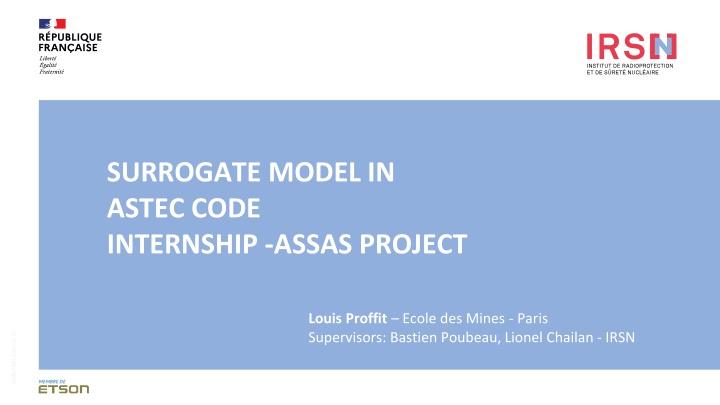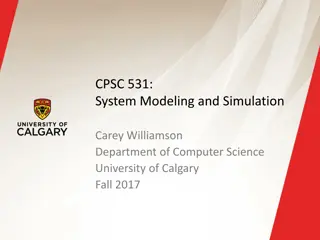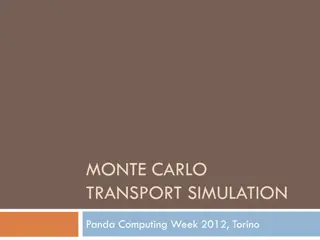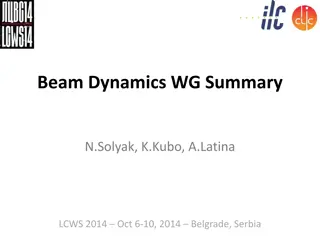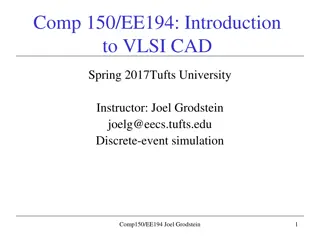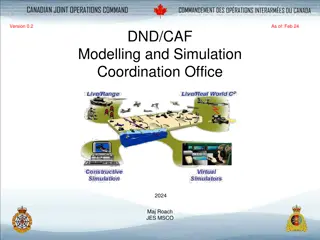Accelerating ASTEC Simulation Using AI
This project focuses on enhancing the performance of the ASTEC multiphysics code through the application of Artificial Intelligence. The internship involves developing surrogate models and improving simulation efficiency for severe nuclear power plant accidents. Key aspects include database management, variable characterization, and accelerating time stepping processes. The goal is to optimize ASTEC's capabilities with AI for faster and more accurate simulations."
Download Presentation

Please find below an Image/Link to download the presentation.
The content on the website is provided AS IS for your information and personal use only. It may not be sold, licensed, or shared on other websites without obtaining consent from the author.If you encounter any issues during the download, it is possible that the publisher has removed the file from their server.
You are allowed to download the files provided on this website for personal or commercial use, subject to the condition that they are used lawfully. All files are the property of their respective owners.
The content on the website is provided AS IS for your information and personal use only. It may not be sold, licensed, or shared on other websites without obtaining consent from the author.
E N D
Presentation Transcript
SURROGATE MODEL IN ASTEC CODE INTERNSHIP -ASSAS PROJECT Louis Proffit Ecole des Mines - Paris Supervisors: Bastien Poubeau, Lionel Chailan - IRSN IRSN/FRM-296 ind. 07
Quicklook Context Internship achievements Perspectives
ASTEC: Accident Source Term Evaluation Code ASTEC is a multiphysics code developped by IRSN aimed to model a severe accident arising in a nuclear power plant. Its architecture relies on a main database allowing up to 12 modules interacting, each module responsible of a set or phenomena and/or a specific domain
ASSAS: Artificial Intelligence for Simulation of Severe AccidentS European project 14 partners Severe accident simulator Proof of concept 6 work-packages Internship 03/23 11/22 ASSAS 11/22 11/27
Objective of the internship: accelerate ASTEC with the help of AI Expected performances for a simulator CPU performance expectation regarding the ratio between simulation and simulated times
Reduced base Filtered base Full base Data extraction and variable characterisation Full database 1Mo per simulated s Allows exact restart Filtered database 300 Ko Allows exact restart No post-processing variables Reduced database 80 Ko No exact restart but reasonable information losses, no fission products storage (means no FP surrogate model) Example Full Filtered Reduced State variables T_liq, T_gas, v_liq, partial pressure Yes Yes Yes Boundary conditions Input FLOW, connection STATus Yes Yes Yes Post-processing Density, viscosity, total pressure Yes Yes No Constants Nodalization Yes No No
Surrogate models Time stepper: explored in this internship Predictor ? ?? = ??+1 Formula ? ??0,?1 = ??1 Ex Replace CESAR in SECONDARy domain Replace CPA after vessel rupture Avantages Flexibility Data collection (numerous snashots, 1 per time step) Performance Error management Drawbacks Error accumulation Performance ? Data collection (1 point per calculation) Sensibility w.r.t operator actions Criteria to choose surrogate model: Expected performance gain Expected precision Dreaded implementation difficulty
Implementation of a steam generator surrogate model Multiplicity: 4 ????????? ????? Few interfaces ASG, ARE, APG Hot and Cold box with PRIMARY SGTR not considered Coupling feasible at time step Fixed dimension (no implicit geometry change)
Steam generator model tested architectures SLO LLO MLS 200 50 500
Surrogate model training and validation 16 accidental sequences (Loss Of Coolant Accident coupled with Station Black Out) during 5000s, time step 1s The three model learning converge, Large LSTM model achieves best performance SLO LLO MLS
Implementation of surrogate model (LLO) in ASTEC Principle Initialize surrogate model with 5 steps of regular ASTEC modules Replace each call to CESAR/ICARE modules (thermal hydraulic and core degradation) with: Predict steam generator state at next time step with surrogate model considering current and previous state variables Hide to ASTEC modules all the objects modelled by surrogate model Feed the connection replacing steam generator by SOURCE input flows Call CESAR-ICARE on reduced reactor cooling circuit Restore previously hidden objects allowing other modules than CESAR and ICARE to consider normally the objects modelled by surrogate model
Implementation of surrogate model (LLO) in ASTEC: some curves Surrogate model implemented in ASTEC is functionnal But some clear drawbacks are clearly highlighted as mass and energy balance violation
Perspectives and conclusions The Steam generator model The preliminary model necessitates kind of physically informed penalisation in order to provide mass and energy balance as well as additional physic constraints Different strategies could be implemented to reinforce the model stability (prediction using the meta model output is currently very weak) Data driven learning Reinforcement learning A comprehensive framemork ready to develop other modelling strategies has been developped The different steps of model development have been done keeping in mind maximal generality All the different steps extracting necessary data from ASTEC calculation, specifying a surrogate model and wire back the model in ASTEC- have been implemented in Python and are fully editable by ASSAS partners.
